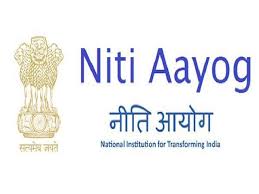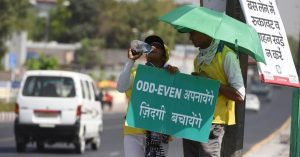Today Current Affairs: 7th November 2022 for UPSC IAS exams, State PSC exams, SSC CGL, State SSC, RRB, Railways, Banking Exam & IBPS, etc
Table of Contents
RISAT-2:

The Indian Space Research Organisation’s (ISRO) RISAT (Radar Imaging Satellite)-2 satellite has made an uncontrolled re-entry into the Earth’s atmosphere at the predicted impact point in the Indian Ocean near Jakarta.
- RISAT-2 is India’s first “eye in the sky” which keep surveillance on the country’s borders as part of anti-infiltration and anti-terrorist operations.
RISAT-2:
- The principal sensor of Risat-2, considered a ‘spy’ satellite, was an X-band synthetic-aperture radar from Israel Aerospace Industries.
- Risat-2 was built more quickly following the 2008 Mumbai terror attacks due to delay with the indigenously developed C-band for Risat-1 satellite.
- The satellite, which was India’s first dedicated reconnaissance satellite, possessed day-night as well as all-weather monitoring capability.
- It was also used to track hostile ships at sea that were deemed a military threat.
- Risat-2, weighing about 300 kg was launched on April 20, 2009, by the PSLV-C12 launch vehicle.
3rd Edition of National Tribal Dance Festival:

Artists from across the world take part in the 3rd Edition of National Tribal Dance Festival in Raipur, Chhattisgarh on the event of state foundation day.
- Nearly 1,500 dancers from across India and countries like Mozambique, Mongolia, Tonga, Russia, Indonesia, Maldives, Serbia, New Zealand and Egypt arrived for the festival.
- National Tribal Dance Festival is one of Chhattisgarh’s grand festivals which celebrates diverse tribal communities and their culture not just in India but from across the globe.
- It is organised under the Tourism and Culture Department of Chhattisgarh.
- This festival aims to unite the tribal communities and provides an opportunity to educate about their rich culture for all.
- The first National Tribal Dance Festival was organised in 2019 and second in 2021.
Mauna Loa : The largest Active Volcano

Mauna Loa, the largest active volcano in the world, may erupt in the near future.
- Mauna Loa is one of five volcanoes that together make up the Big Island of Hawaii.
- It is the southernmost island in the Hawaiian archipelago.
- It’s not the tallest (that title goes to Mauna Kea) but it’s the largest and makes up about half of the island’s land mass.
- It sits immediately north of Kilauea volcano, which is currently erupting from its summit crater.
- Kilauea is well-known for a 2018 eruption that destroyed 700 homes and sent rivers of lava spreading across farms and into the ocean.
- Mauna Loa last erupted 38 years ago.
Adaptation Gap Report 2022 : UNEP

According to the United Nations Environment Programme’s (UNEP) Adaptation Gap Report, 2022, global efforts in adaptation planning, financing and implementation are not enough to prepare vulnerable communities around the world to adapt to the rising risks from the impacts of climate change.
- The report found some progress on adaptation plans from national governments, but they are not backed by finance.
Findings:
- A third of the 197 parties to the United Nations Framework Convention on Climate Change (UNFCCC) have incorporated quantified and time-bound targets on adaptation. And 90% of them have considered gender and disadvantaged groups.
- International adaptation finance flows are 5-10 times lower than required and this gap continues to grow. Finance for adaptation increased to USD 29 billion in 2020, a 4% increase over 2019.
- This is when developing countries’ estimated annual adaptation needs are USD 160-USD 340 billion by 2030 and USD 315-USD 565 billion by 2050.
Shyama Prasad Mukherji Rurban Mission:

Aibawk cluster in the Aizwal, Mizoram becomes the first cluster to be completed under the Shyama Prasad Mukherji Rurban Mission.
- SPMRM was launched by the Prime Minister in February 2016 with a vision to provide amenities to rural areas which are perceived to be urban and have the potential to stimulate local economic development.
- The Mission aim: Development of 300 Rurban clusters, in the next five years.
- Rurban Cluster : It is a cluster of geographically contiguous villages with a population of about 25000 to 50000 in plain and coastal areas and with a population of 5000 to 15000 in desert, hilly or tribal areas.
- Selection of the ‘Rurban Clusters’
- There are two categories of clusters under SPMRM: Non-Tribal and Tribal. The process of selection varies for each of these categories.
- While selecting the Rurban cluster, the State may identify a large village/gram panchayat that are growth centers with resources available in the area that could potentially lead the economic transformation of the region.
- These growth centres could also be block headquarter, villages or census towns.
- The clusters could then be formed by identifying geographically contiguous villages/gram panchayats within a radius of 5–10 km (or radius appropriate to the population density and geography of the region) around the identified growth centre.
Fourth Edition Of ‘Innovations For You’ : Coffee Table Book Series

Atal Innovation Mission (AIM) NITI Aayog recently launched the fourth edition of ‘Innovations for You’ coffee table book featuring 75 successful women entrepreneurs of India.
- ‘Innovations For You’ is a Coffee Table Book series with 3 editions being released previously.
- The book captures success stories of start-ups supported through Atal Incubation Centres, Atal Community Innovation Centres and Atal New India Challenges, three flagship programs under the Atal Innovation Mission.
- Each edition showcases the journey of entrepreneurs working in different sectors and is dedicated to creating new, disruptive, innovative products, services, and solutions that can pave the path for a sustainable future.
- The first edition was focused on the Healthcare sector; the second on Agriculture and the Allied sector and the third on Transport and Mobility.
- Out of the 2900 plus startups supported by AIM, more than 850 plus are led by women.
Atal Innovation Mission (AIM):
- The Atal Innovation Mission (AIM) including Self-Employment and Talent Utilisation (SETU) is Government of India’s endeavour to promote a culture of innovation and entrepreneurship esp. in technology driven areas.
- Mission HQ: New Delhi.
- In 2016, Union Cabinet approved the establishment of Atal Innovation Mission (AIM) and Self-Employment and Talent Utilisation (SETU) in NITI Aayog.
- It has two core Functions:
- (1) Entrepreneurship promotion through Self-Employment and Talent Utilisation wherein innovators will be supported to become successful entrepreneurs and
- (2) Innovation promotion to provide a platform where innovative ideas are generated.
National SC-ST Hub:

The 5th meeting of High Powered Monitoring Committee (HPMC) under National SC-ST Hub scheme was chaired by Union Minister of Micro, Small and Medium Enterprises.
- Objective of National SC-ST Hub is to develop a supportive ecosystem for SC/ST entrepreneurs to achieve the mandated 4% procurement by the CPSEs from the SC/ST entrepreneurs as laid down in Central Government Public Procurement Policy for Micro and Small Enterprises.
- Scheme applicable for existing and Aspiring SC/ST Entrepreneurs.
- Key Benefits:
- To achieve 4% Public Procurement target from SC-ST entrepreneurs.
- Facilitating SC/ST Entrepreneurs to be part of vendor development programs and mentoring support.
- Collection, collation and dissemination of information regarding SC/ST enterprises and entrepreneurs.
- Distribution of trade specific tool kits to trained candidates.
- The key action areas: Vendor development, participation in public procurement, building reliable database, credit facilitation, technology upgradation, marketing support, and special subsidies under various schemes etc.
Grievance Redressal Index:

The Unique Identification Authority of India (UIDAI) tops Grievance Redressal Index third month in a row.
- Grievance Redressal Index is published by Department of Administrative Reforms and Public Grievances (DARPG).
- UIDAI has launched its new AI/ML based Chatbot, Aadhaar Mitra to further enhance residents’ experience.
- The new Chatbot comes with enhanced features like – check Aadhaar enrollment/update status, tracking of Aadhaar PVC card status etc.
- UIDAI is gradually rolling out advanced and futuristic Open-Source CRM solution.
UIDAI:
- It is a statutory authority established under the provisions of Aadhaar act 2016 by the Govt. of India under the Ministry of Electronics & Information Technology.
- Its aim to provide for good governance, efficient, transparent and targeted delivery of subsidies, benefits and services, the expenditure for which is incurred from the Consolidated Fund of India or the Consolidated Fund of State to residents of India through assigning of unique identity numbers.
- Its mission is to ensure security and confidentiality of identity information and authentication records of individuals.
Wangala Dance : Meghalaya

Members of the Garo tribal community recently performed Wangala dance on the occasion of ‘The Rising Sun Water Fest-2022’ on the banks of Umiam Lake in Meghalaya.
- The Wangala Festival, also known as the 100 drum festival is celebrated with much zeal and enthusiasm in India’s north-eastern state of Meghalaya.
- Celebrated since 1976, it’s the most important festival of the Garo tribe and attracts a lot of tourists.
- During the Wangala, tribals offer sacrifices to please their deity Saljong, the Sun God.
- It marks the end of the long harvest season.
- The celebration also signifies the end of a long toil period in the field for the Garo tribe before the start of the winters.
- The first day of the festival is celebrated with a ceremony called Ragula which is performed in the house of the village’s chief.
Infrastructure Project Development Fund Scheme (IIPDF Scheme):

The Department of Economic Affairs (DEA), Ministry of Finance notified Scheme for Financial Support for Project Development Expenses of PPP Projects – India Infrastructure Project Development Fund Scheme (IIPDF Scheme)
- It is a Central Sector Scheme which will aid the development of quality PPP projects by providing necessary funding support to the project sponsoring authorities, both in the Central and State Governments.
- Funding: The corpus of the IIPDF shall comprise of initial budgetary outlay of Rs. 100 Crore by the Ministry of Finance.
- This would be supplemented, should it become necessary, through budgetary support by the Ministry of Finance from time to time.
- Funding under IIPDF Scheme is in addition to the already operational Scheme for Financial Support to PPPs in Infrastructure (VGF Scheme).
- Organisational Structure: The IIPDF will be administered by the Empowered Institution.
- The Empowered Institution will:
- Select projects for which project development costs will be funded.
- Set the terms and conditions under which the funding will be provided and recovered.
- Set milestones for disbursing and recovering (where appropriate) the funding.
- The Public Private Partnership Cell of the DEA will provide support functions examine the applications received for assistance under IIPDF.
First Edition Of The Tokhü Emong Bird Count : Nagaland

Nagaland is hosting the first edition of the Tokhü Emong Bird Count (TEBC) between November 4 to 7, a four-day documentation event to list birds in the state.
- It is the first avian documentation exercise taken by Nagaland to go beyond Amur falcons.
- The event is being held during the Tokhü Emong post-harvest festival of the Lotha Nagas to spread awareness about Nagaland’s bird diversity.
- This event is being organised in collaboration with the Wokha Forest Division and the Divisional Management Unit, Nagaland Forest Management Project (NFMP), Wokha, and Bird Count India.
- The TEBC falls within the Salim Ali Bird Count, a nationwide event conducted by the Bombay Natural History Society.
Snakebite Deaths : Report

A study published in Nature Communications recently estimated that a vast majority of snakebite deaths globally — up to 64,100 of the 78,600 deaths — occur in India.
- The study used data from verbal autopsy and vital statistics (civil registration) to estimate snakebite deaths from the Global Burden of Disease 2019 study.
- The global estimate of deaths due to snakebite comes 14 years after the previous one in 2008 and provides a more robust estimate.
- Snakebite is a public health problem in India and many other low- and middle-income countries has been long known.
- Within India, Uttar Pradesh has the highest number of deaths, estimated to be up to 16,100, followed by Madhya Pradesh (up to 5,790 deaths), and Rajasthan (up to 5,230 deaths).
- The study estimated that the age-standardised death rate (which accounts for different age-structures in different countries, thus allowing comparison between countries) in India, at 4.0 per 1,00,000, is also among the highest globally, and many times over than the global figure of 0.8 deaths per 1,00,000.
- Only Somalia has a higher age-standardised death rate than India at 4.5 per 1,00,000.
- Within India, Chhattisgarh, Uttar Pradesh, and Rajasthan have even higher age-standardised death rates, at 6.5, 6.0, and 5.8 per 1,00,000, respectively.
Bringing Back The ‘Odd-Even’ Vehicle Rationing Scheme : Delhi Govt

After implementing a series of anti-pollution measures to control the plummeting air quality index (AQI) in Delhi, the Aam Aadmi Party government is also considering bringing back the ‘odd-even’ vehicle rationing scheme.
- Odd-even’ was first introduced in 2016 by the AAP government to control vehicular pollution and bring down increasing particulate matter levels.
- Under it, private vehicles with registration plates ending in odd numbers could ply on odd dates, and even numbers on even dates.
- Studies and research done on its impact in Delhi suggest positive results — from reduction in congestion to a slight drop in pollution levels and consequent improvement in air quality.
- According to a study done by Delhi Technological University (DTU) published in 2016, when the scheme was implemented for a roughly two-week period, concentration of PM 2.5 and PM 1 saw a drop.
- Studies have also shown that on an average, there was a reduction in PM 2.5 of 5.73 per cent and 4.70 per cent in PM 1 levels.




